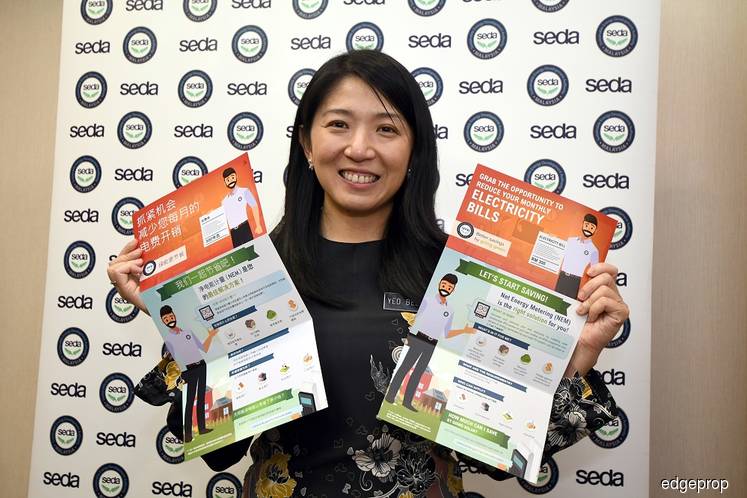PETALING JAYA (May 14): Owners of commercial and industrial buildings, especially small-and-medium enterprises (SMEs) have been urged to explore the feasibility of installing solar panels on roofs to reduce electricity bills and enjoy incentives offered by the government.
Such incentives include green investment tax allowance and the Green Technology Financing Scheme (GTFS), but many are still unaware of them, said Minister of Energy, Science, Technology, Environment and Climate Change (MESTECC) Yeo Bee Yin today.
Yeo was speaking to the media at the Sustainable Energy Development Authority (SEDA) Malaysia in Putrajaya where she launched the new SEDA Malaysia website which features a renewable energy microsite and a Net Energy Metering (NEM) calculator.
“A lot of people still don’t know these incentives, so that is why we are launching the NEM calculator and microsite [to raise the awareness].
“These incentives are especially attractive for SMEs which have factories with big roof. We want to promote the awareness among SMEs so that people will come and explore,” she said.
According to the Malaysian Investment Development Authority, 100% green investment tax allowance is offered on qualifying capital expenditure incurred on green technology assets, which includes solar panels until 2020.
Meanwhile, under the GTFS, a fund of RM2 billion (announced in Budget 2019) will be made available at selected commercial banks to subsidise the interest cost incurred by the investment into green technology by 2% for the first five years.
“It is a very good investment for some of the people [who own buildings] with the right roof structure. To tackle the issues of capital investment, we have green financing schemes and tax allowances to facilitate and catalyse growth in the adoption of rooftop solar among commercial and industrial [building owners].
“SMEs are more vulnerable to a lot of things. So I hope this will help them to manage their electricity cost better. But big companies are also encouraged to participate in and enjoy these incentives by the government,” she elaborated.
Yeo explained that it would be more feasible for solar panel service providers to focus on commercial and industrial buildings before they go into the residential segment as the former offers better economies of scale.
“Commercial and industrial [buildings] have a bigger roof [compared to residential houses]. Our solar panel players today are still very small and would not be able to go house by house because each house is only [able to install] a few kilowatt (kW) [of solar panels] whereas for commercial and industrial [buildings], we are looking at 500kW and above,” she said.
Nevertheless, residential property owners are also encourage to participate in the NEM scheme, she added.
The total quota allocated for NEM is 500 megawatt (MW), of which 50MW and 450MW are allocated for the domestic and non-domestic segments (comprising commercial, industrial and agriculture), respectively.
According to SEDA Malaysia, about 36.64MW and 3.17MW have been taken up in the domestic and non-domestic segments to date, respectively.
Source: The Edge


